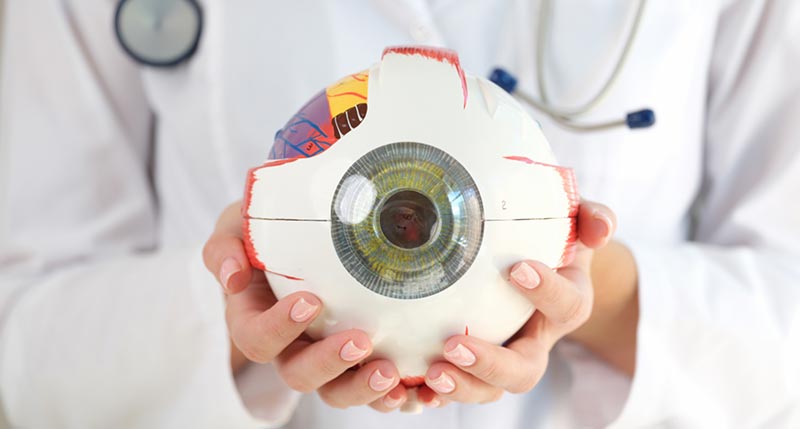Andalusia Pediatrics Clinics: Dedicated Take Care Of Your Child's Health
Andalusia Pediatrics Clinics: Dedicated Take Care Of Your Child's Health
Blog Article
The Benefits And Drawbacks of Various Refractive Surgical Treatments for Improved Eyecare

LASIK Surgical Procedure
LASIK surgical procedure is a typically done refractive procedure that aims to remedy vision issues such as astigmatism, farsightedness, and nearsightedness. This surgical method has actually gotten popularity because of its performance in giving clients with more clear vision and reducing their dependency on glasses or contact lenses. During the treatment, a slim flap is produced on the cornea, and a laser is made use of to improve the underlying cells, remedying the refractive mistake. The flap is after that rearranged, permitting quick healing and minimal pain for the person.
Among the primary benefits of LASIK surgery is the rapid renovation in vision experienced by numerous individuals. Many people see a significant improvement in their eyesight shortly after the procedure, with marginal downtime needed for recuperation. In addition, LASIK is known for its high success price and reduced incidence of complications when done by skilled cosmetic surgeons. Like any kind of medical procedure, LASIK also lugs some dangers, including completely dry eyes, glow, halos, and under or overcorrection of vision. It is essential for individuals taking into consideration LASIK surgical procedure to undertake an extensive examination by an eye treatment professional to establish if they appropriate prospects for the treatment.
PRK Treatment
The PRK treatment, also known as Photorefractive Keratectomy, is a type of refractive surgery that aims to fix vision issues comparable to LASIK surgical procedure. Unlike LASIK, which includes producing a flap in the cornea, PRK functions on the surface area layer of the cornea.
Among the benefits of PRK over LASIK is that it gets rid of the danger of flap-related complications considering that no flap is created throughout the surgery. This can be valuable for people with thin corneas or those associated with contact sports where eye injury is a possibility. The healing time for PRK is usually much longer contrasted to LASIK, as the external layer of the cornea needs time to regrow after the procedure. Regardless of the longer recuperation duration, PRK can be a suitable choice for people looking for vision improvement surgical procedure.
SMILE Surgical Procedure
A cutting-edge refractive surgical procedure technique obtaining appeal in the area of ophthalmology is SMILE Surgical procedure. Little Laceration Lenticule Extraction (SMILE) is a minimally invasive treatment that you can try here corrects vision by reshaping the cornea making use of a femtosecond laser. Unlike standard LASIK surgery, SMILE Surgical procedure involves producing a small laceration in the cornea to draw out a lenticule, which results in less interruption to the corneal framework and potentially faster recovery times.
One of the main advantages of SMILE Surgical treatment is its ability to treat nearsightedness (nearsightedness) and astigmatism with high precision, bring about excellent visual outcomes for individuals. The minimally intrusive nature of the procedure additionally minimizes the threat of issues such as dry eye syndrome, making it a desirable option for people seeking refractive surgical treatment.

LASEK Method
Having explored the benefits and factors to consider of SMILE Surgical treatment, one more significant refractive surgery strategy worth taking a look at is the LASEK Strategy. LASEK, which means Laser-Assisted Subepithelial Keratectomy, is a form of laser eye surgery that intends to fix refractive errors such as nearsightedness (nearsightedness), hyperopia (farsightedness), and astigmatism.
Unlike LASIK, LASEK does not entail producing a corneal flap. Instead, during a LASEK procedure, the surgeon utilizes a diluted alcohol option to loosen up the slim outer layer of the cornea, recognized as the epithelium. This layer is then delicately relocated apart to allow the laser to improve the underlying corneal tissue. When the cornea has been improved to the wanted level, the epithelial layer is rearranged.
One of the key benefits of LASEK is that it can be suitable for individuals with slim corneas who might not be good prospects for LASIK. In addition, LASEK usually results in marginal post-operative pain and a quicker healing time compared to PRK. The visual recuperation process with LASEK may be somewhat longer than with LASIK.
Implantable Contact Lenses
Implantable Contact Lenses provide a lasting vision adjustment option for individuals seeking an option to conventional call lenses or glasses. These lenses, also understood as phakic intraocular lenses, are surgically put into the eye to correct refractive mistakes such as myopia (nearsightedness), hyperopia (farsightedness), and astigmatism. neurologist Andalusia. Unlike conventional contact lenses that rest on the surface area of the eye, implantable call lenses function within the eye itself, providing clear vision without the requirement for everyday upkeep or removal
One of the essential benefits of implantable call lenses is their durability. Once put, they can continue to be in the eye forever, supplying consistent and secure vision adjustment. In addition, these lenses can be a superb alternative go to website for individuals who are not excellent prospects for laser eye surgical procedure or who like a relatively easy to fix vision modification procedure.
However, implantable get in touch with lenses do bring some dangers, including the capacity for cataracts or boosted eye pressure. It is important for individuals considering this alternative to talk to an eye care professional to establish if implantable get in touch with lenses are the ideal selection for their details needs and eye wellness.
Conclusion
In verdict, each type of refractive surgery has its own benefits and downsides. LASIK surgical treatment is popular for its quick recuperation time, while PRK procedure may be appropriate for clients with slim corneas.

Generally, SMILE Surgical procedure offers an encouraging choice for people looking to enhance their vision with refractive surgical treatment.
Report this page